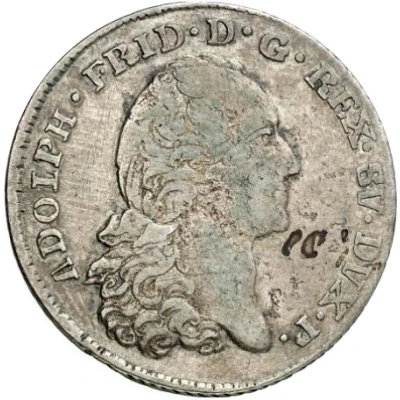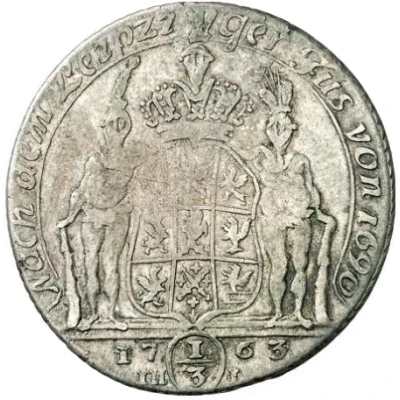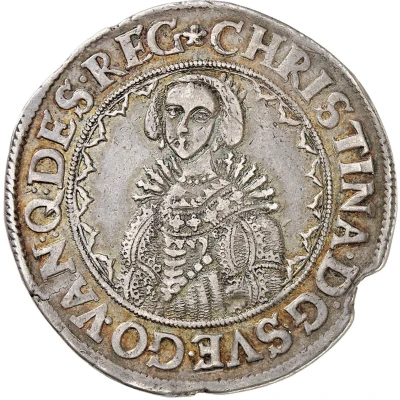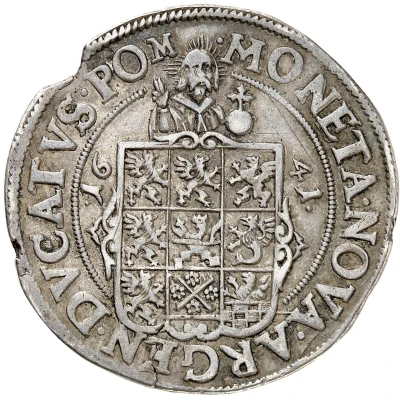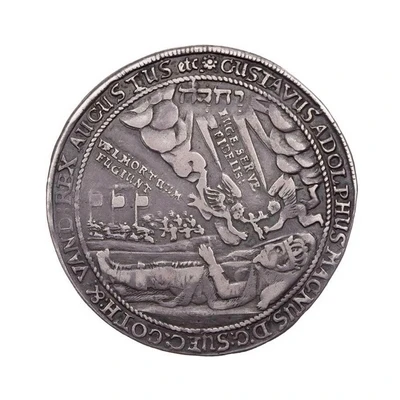
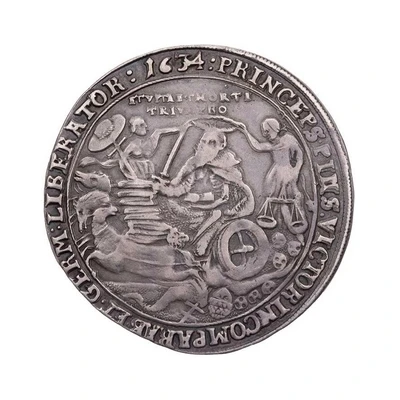

© Kölner Münzkabinett Tyll Kroha Nachfolger UG
½ Thaler - Gustav Adolph II
| Silver | 14.22 g | 38 mm |
| Issuer | Swedish dominion of Pomerania (German States) |
|---|---|
| King | Gustavus II Adolphus (Gustav II Adolf) (1621-1632) |
| Type | Circulating commemorative coin |
| Years | 1633-1634 |
| Value | ½ Thaler |
| Currency | Thaler (1630-1815) |
| Composition | Silver |
| Weight | 14.22 g |
| Diameter | 38 mm |
| Shape | Round |
| Demonetized | Yes |
| Updated | 2024-10-05 |
| Numista | N#165271 |
|---|---|
| Rarity index | 100% |
Reverse
Gustavus, wearing armor and holding a Bible and a sword, riding in a chariot drawn by three winged horses over the Hydra of Discord; to left, Faith, holding a Bible topped by a flaming heart and, to right, Courage, holding a column, both crowning the king with a laurel wreath; on the chariot wheel.
Script: Latin
Engraver: Sebastian Dadler
Comment
Minted in rougly the weight of a 1/2 Taler, also exists as a more elaborate medal minted in the weight of about 5-1/2 Taler.After his death at the Battle of Lützen on 6 November 1632, the king’s body was first bought to Weissenfels and then, in Spring 1633, to Wolgast on the island of Usedom. Then, in July 1633 the Swedish fleet brought the body back to Sweden, landing on 8 August at Nyköping where the body was kept until the grave monument in the Riddarholskyrka in Stockholm was completed. At the funeral celebrations, which took place on 22 June 1634, these medals were distributed among the participants. Gustaf Adolf den store, the name formally given to him by the Swedish parliament in 1634, was the most important of all Swedish kings and, had he not been killed, the borders between Protestant and Catholic Europe would have surely been quite different, and the Counter-Reformation would have been seriously retarded. Born in 1594, he had led his armies since he became king at 17 and was a charismatic leader with an iron will. He insisted on leading from the front; as a result he was shot in 1627, a wound that precluded him from wearing heavy armor from then on: this surely proved fatal. At Lützen, on the 16th of November, in deep fog, the king became separated from his troops and was killed by enemy cavalry: his body was only discovered some time later.
Interesting fact
One interesting fact about this coin is that it was minted during a time of great turmoil in Europe, specifically during the Thirty Years War (1618-1648). The war was fought primarily in the Holy Roman Empire, which included the German States, and it had a profound impact on the political, social, and economic landscape of the region. Despite the challenges of this time period, the minting of this coin suggests that there was still a demand for commemorative coins and a desire to honor notable figures like Gustav Adolph II.
